- NAPPIES
- BABY FOOD & FEEDING
- BABY CLOTHING
- BABY EQUIPMENT
- FAMILY ESSENTIALS
- THE PET SHOP
- BROWSE SPECIALS
|
Baby Stages
There are lots of different ideas on baby stages, depending who you talk to or what you read, which can be confusing. For the practical purposes of matching product descriptions to your baby, the following is a general guideline based on weight range, age and ability. Don’t stress out if your baby takes longer to do things, as everyone learns at their own pace.
A baby is considered a newborn during the first month of life (although some say a newborn is technically aged 0-3 months). They learn to adapt to the outside world, and everything is new (and sometimes scary). Developmental Milestones Smiling. Early on, it will be just to them self. But within three months, baby will be smiling in response to your smiles and trying to get you to smile back Raising her head and chest when on tummy Follow objects with eyes and gradually decrease eye crossing Open and shut her hands and bring hands to her mouth Grip objects and try to reach for dangling objects Age Appropriate Products Pram toys and mobiles, wrist rattles, feet rattles. Parenting Tip Try to avoid being over anxious, even though it can be hard when you are sleep deprived. Don’t be afraid to ask for help if needed and welcome advice of other experienced parents. Try to understand that everybody gets trapped in the “baby tunnel” for about 3 months, but there is light at the other side… Do get your child used to noise. Don’t fall into the trap of sneaking around the house or telling couriers not to buzz or guests to speak in quiet tones (it has been done). I exposed my baby to as much noise as possible and she could sleep anywhere, anytime, which was very handy.
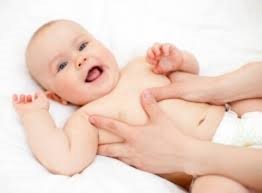
This is the next stage after newborn (although some say an infant is technically aged 3months-1 year). Personally, I think this is the best stage. Baby can hold their head well, sit upright and be generally cute, without getting up to too much mischief. Developmental Milestones 4-6 months – Rolling front to back and back to front, rolling onto tummy and holding head up (important strengthening exercise for neck and back in preparation for learning to sit and eventually crawling). Babbling, laughing, reaching out and grabbing objects (hair, necklaces and earrings are popular), manipulating objects months - Baby is usually strong enough to sit with support and has good head control 7-9 months - Sitting without support with a straight back, turning while sitting, reaching for a toy. Starting to scoot or crawl, and learning to pull themselves up from a sitting position. Start to repeat base sounds like Mama, Dada, Papa. Respond to the word “No”. Start to engage in simple games, like peek-a-boo. Age Appropriate Products Play gym, play mat or similar to engage a baby and promote tummy time. Support pillow to put behind a baby when learning to sit, so they don’t fall backwards on their head. Simple colourful baby toys which are easy to grip, and make a sound, teething rings, first bath toys, weaning utensils, Bumbo Baby Seat. Parenting Tip This is the stage where lots of bumps on heads occur. Be mindful of baby learning to roll, which is especially important when placing a baby on a changing station or bed – my advice is to keep one hand on baby at all times if they are lying on something elevated.
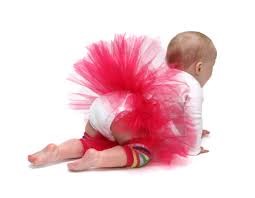
A baby is a crawler when they start to crawl, or shuffle as was the case of my daughter. Babies learn to crawl typically between 6-10 months of age, with chubbier babies often being later crawlers (and late walkers). This is the time when the real parenting fun starts, as your baby has a lot of energy, is now mobile and can get into everything -and usually does. Developmental Milestones Learning to balance on hands and knees
Crawling to strengthen muscles enough in preparation for walking
Learning to move backwards and forwards
Age Appropriate Products Baby safety devices start to be necessary, particularly locks on low-lying cupboards. Many parents also start considering playpens at this time – these are great when you want to take more than a 20 second shower, and with a soft base, can help avoid inevitable bumps on the head from crawling mishaps. Fun teether toys, interesting pram toys, Jolly Jumper with Musical Mat. Parenting Tip This is the stage where children get into everything. Lock up medicines, cleaners, TV remotes, car keys, and keep them away from handbags, mobiles, jewellery, etc. It’s definitely no fun looking for your car keys for 3 days or seeing your mobile phone in the toilet…
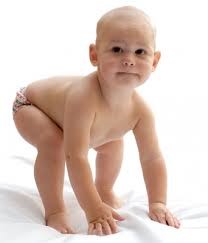
After a baby successfully learns to crawl, they start to pull themselves up and walk around furniture, or want their parents and carers to hold them by both hands while they take tippy toe steps (back-breaking work). Toddlers are technically aged 1-4 years and children are usually in toddler nappies the longest, because they start to move around and lose a bit of their chubbiness, especially around the legs. Developmental Milestones The last development stage in baby’s first year is quite a transition. They might look and act more like a toddler, but still a baby in many ways. Self feeding, mastering the “pincer grasp“ enabling small objects to be held between their thumb and forefinger Move around the room on their feet while holding onto the furniture Start to automatically identify family members/carers/friends by name and starting to use 2-syllable names , such as "Mama", "Dada", “doggy”. The average is about three spoken words by the first birthday, but the range on this is enormous. Point at objects in order to get your attention. Begin “pretend play” by copying you or using objects correctly, such as pretending to talk on the phone Takes first steps. This usually happens right around one year, but it can vary greatly. Age Appropriate Products Baby safety devices should start to become a regular feature of your home décor. Very simple hard picture books, bath toys, cuddly toys, night lights, feeding utensils. Parenting Tip This is the stage where children get into more things than ever. Lock up anything you value, or put it out of reach of your toddler. Also, make sure furniture is stable, especially chairs and flat screen TVs.
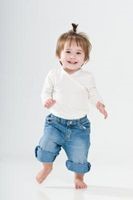
This is where a baby starts to walk (and run) autonomously. I actually blinked and missed this moment with my first born. Developmental Milestones Starts walking independently Helps while getting dressed (by pushing arms into sleeves) Starts to want to help doing things Age Appropriate Products Baby puzzles, more complex word picture books, musical games, corner cushions for tables, bathroom safety devices, door stops (to stop slamming doors), safety gates, safety harness, window locks, toilet training products, mattress protectors, self-feeding utensils, plastic cups, messy mats. Parenting Tip This is the stage where children learn that not only can they walk, but run as well, often falling flat on their face in the process. Prepare for bumps, and invest in some corner cushions (as their eye height will now be similar to table height). Also, invest in 1 pair of good quality shoes that give decent support, and don’t be tempted to buy shoes that they can “grow into”, as this will hinder their new found walking talent. Also children assert their independence, while still learning coordination, so tantrums abound and things tend to get broken around the house either through dropping or throwing – so try to buy unbreakable cups.
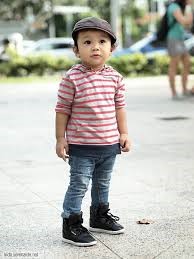
This stage is when you realise that your little baby has quickly grown into a small child. They are quite independent, sure-footed and fast! Developmental Milestones Very stable and quick on their feet More autonomous doing simple tasks – often refusing help May have a tendency to run away to do their own thing Age Appropriate Products Gendered toys, first bicycle/trike/scooter, more complex puzzles, ball games, wrist bands (so they can be found if they get lost). Parenting Tip Facilitate their growing independence by giving them achievable tasks. Watch that they don’t run out in front of or behind of cars – especially in car parks.
Nappy Sizing for Common Developmental Milestones *Note these sizings are based on average growth curves Newborn – Nappies less than 5kg Average boys and girls up to 6 weeks Infant - Nappies 4-8kg Average girl 3 weeks – 7.5 months Average boy 2 weeks – 6 months Crawler – Nappies 6-11kg Average girl 3 months – 21 months Average boy 2.5 months – 18 months Toddler – Nappies 10-15kg Average girl 17 months – 3.75 years Average boy 14 months – 3.5years Walker – Nappies 13-18kg Average girl 2.25 years – 5.5 years Average boy 2 years – 4.5years Junior – Nappies 16kg+ Average girl 4.25 years + Average boy 3.75 years +
The following table shows common developmental milestones that babies reach each month during their first year, in four major categories. Keep in mind that all babies are different and every baby grows at his own pace. There's no precise time that most of these skills first appear. If your child hasn’t reached a milestone by the month it is listed on this chart, it is usually a perfectly normal variation in child development. Watch for progress, not deadlines .
|